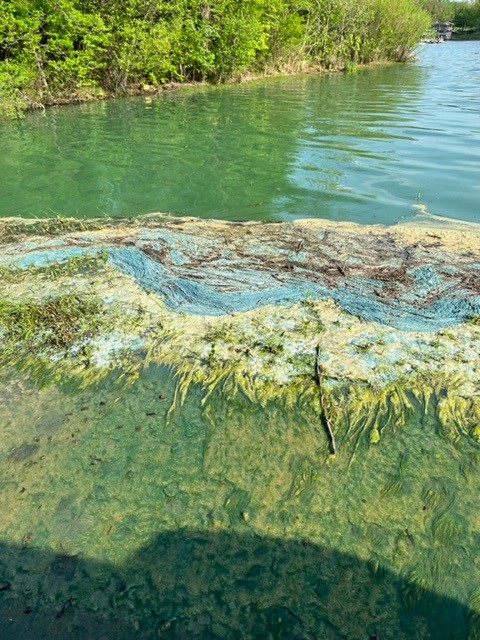ILPOA Neighborhood Watch
May 19, 2022Memorial Day Weekend Reminders
May 25, 2022Lake Restoration Update
Dear Members,
Below you will find a newsletter update from our consultant partner Dr. Jennifer Jermalowicz-Jones of Lake Restorative Sciences. Dr. JJ is tasked with working with our board and our vendor Sis-Bio to ensure we are driving the right outcomes for our lake ecosystem.
Next week, we will be providing the most recent test results for Harmful Algae Blooms (HABs and e.Coli). The Lake Restoration board completed HAB testing last week, and we are pleased to report that while there are high concentrations of HABs in the lake at this time, none of the testing showed evidence of a toxic algae bloom.
If you have any questions, please email lakerestore@ilpoa.org.
Sincerely,
Lake Restoration Board
Indian Hills Lake Current State of the Lake Update
Dr. Jennifer Jermalowicz-Jones, CLP
Restorative Lake Sciences
Background
Indian Hills Lake is officially classified as “a man-made eutrophic (nutrient-rich) impoundment”. Nutrients such as phosphorus and nitrogen enter the lake from runoff, drains, fertilizers, and septic tanks and drain fields. Because of this, man-made lakes require frequent corrective (improvement) actions to reduce negative impacts of nutrient loads which often result in undesirable algal blooms and nuisance aquatic plant growth, throwing the lake’s ecosystem out of balance. The Lake Restoration Committee and the ILPOA board are motivated and working with lake experts (Restorative Lake Sciences and SIS BIO/Clean-Flo International) to help restore Indian Hills Lake back to balance, through corrective (improvement) actions. That is what the Lake Restoration effort is all about!
For several years, the Lake Restoration Committee has studied the serious issues facing the lake health and developed a plan utilizing modern technology and scientific resources. Through a volunteer three-year capital campaign, nearly $1.2 million was raised to implement corrective actions, ensuring the Lake’s health for many years to come. To date, 280 families have made contributions to support this crucial effort. Without a healthy lake, we all lose –the fun of our water sports and the value of our properties! We still hope more of our lake community families will join us in financially supporting this cause. Every gift, no matter how small or large, is critical to our plan. Check out all the resources at www.ilpoa.org/restoration. Gifts can be sent to LAKE RESTORATION P O BOX 800, CUBA MO, 65453
Progress To Date
Over the past decade, Indian Hills Lake has experienced increasing blue-green algal blooms. Below is a picture of our lake near the dam from the week of 5/9/2022.

There are many different types of algae in inland lakes which include green algae, diatoms, and blue-green algae. In high abundance, green algae can form dense mats on the surface but is not harmful. Blue-green algae, however, often produce toxins that can be health hazards to humans and animals. When blue-green algae forms scums on the lake surface, not much light can penetrate to the bottom to allow aquatic vegetation to grow. Aquatic vegetation, when balanced, is a vital component of inland lakes as it produces oxygen, provides fishery forage habitat, and helps keep suspended solids from making the water appear murky. When a lake converts from an aquatic-plant dominant state to an algal-dominant state, it is unbalanced and difficult to correct.
This means that blue-green algae needs to be reduced, which requires reducing nutrients. One way that we are working to bring back the balance includes the use of whole-lake laminar flow aeration (LFA) through the “bubblers” you see in the lake. Along with the aeration, the lake is being treated with beneficial, natural, microbes and enzymes. Laminar flow aeration is a non-turbulent form of aeration that aims to increase the dissolved oxygen throughout the lake water column at all times. Prior to LFA, Indian Hills Lake would go anoxic (low oxygen) beginning in late spring. This is very dangerous for inland lakes as it allows for the release of high nutrients from the lake bottom that feed the blue-green algae blooms. Thus far, LFA has increased the lake dissolved oxygen from top to bottom. The blue-green algal population is also being evaluated and is expected to decline over time with LFA implementation.
Your lake experts are actively collecting data on the lake and have now collected a whole-year of baseline data. This baseline is extremely important to ensure proper steps are taken to bring the lake back in balance. In 2022, they are collecting data after LFA has begun operating. This will allow them to determine what positive improvements the LFA is having on Indian Hills Lake water quality, and adjust treatments to ensure optimal success. The more impaired a lake is, the more time will be required to significantly improve its condition. However, we expect some significant positive results in the upcoming months and years and will be actively reporting these findings to the lake community on going.
Sincerely,
Dr. Jennifer Jermalowicz-Jones, CLP
Restorative Lake Sciences
